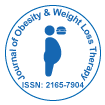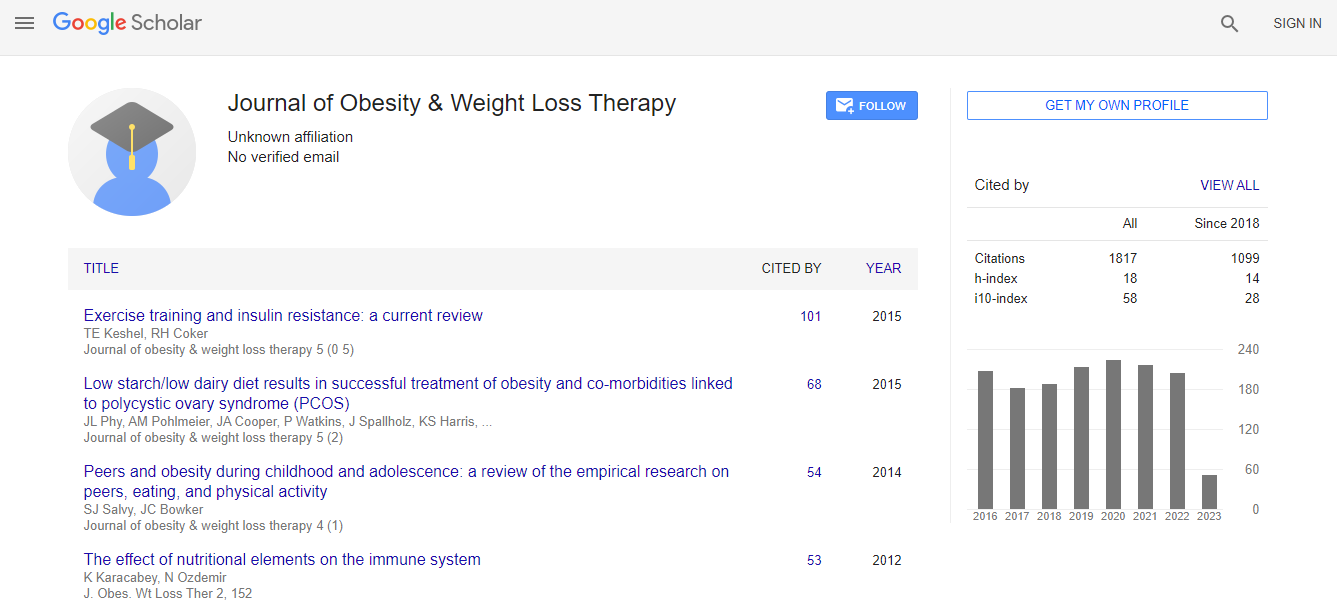Our Group organises 3000+ Global Conferenceseries Events every year across USA, Europe & Asia with support from 1000 more scientific Societies and Publishes 700+ Open Access Journals which contains over 50000 eminent personalities, reputed scientists as editorial board members.
Open Access Journals gaining more Readers and Citations
700 Journals and 15,000,000 Readers Each Journal is getting 25,000+ Readers
Google Scholar citation report
Citations : 2305
Journal of Obesity & Weight Loss Therapy received 2305 citations as per Google Scholar report
Journal of Obesity & Weight Loss Therapy peer review process verified at publons
Indexed In
- Index Copernicus
- Google Scholar
- Open J Gate
- Genamics JournalSeek
- Centre for Agriculture and Biosciences International (CABI)
- RefSeek
- Hamdard University
- EBSCO A-Z
- OCLC- WorldCat
- SWB online catalog
- CABI full text
- Cab direct
- Publons
- Geneva Foundation for Medical Education and Research
- Euro Pub
- University of Bristol
- Pubmed
- ICMJE
Useful Links
Recommended Journals
Related Subjects
Share This Page
Effects of high-intensity lifestyle intervention on increased cardiometabolic risk in truncal obese adults
Euro Global Summit & Medicare Expo on Weight Loss
Vera P Simovska
Posters-Accepted Abstracts: J Obes Weight Loss Ther
Abstract
Obesity is a chronic disease that increases the risk for coronary heart disease (CHD) and type II diabetes (T2DM) and it’s a growing
public health problem worldwide. The purpose of our study was to develop a model of therapeutic efficiency high-intensity
lifestyle intervention intended for truncal obese adults with increased cardiometabolic risk. Within the randomized controlled trial
at a group of truncal obese adults with risk factors for CHD and T2DM, we suggest the following two types of high-intensity lifestyle
interventions: 1st-low fat, hyperprotein, restriction diet (RD) of 1200-kcal/d (female) and 1500-kcal/d (male) with low glycemic (GI)
and atherogenic index, and a specific proportion among SFA, MUFA and PUFA. The 2nd-RD and the individually dosed physical
activty (PA) with gradually, from low to moderate and peaks of high intensity (50%-60%-75% VO2 max) in accordance to the initial
level of the individual aerobic capacity (VO2 max), expressed into METs. After 30 days there was increase energetic value of RD for
200-kcal/d in accordance with increased PA. The changes in anthropometric measures, metabolic profiles, VO2 max and BMR are
evaluated after 30 and 50 days. The efficiency of the progammed PA in combination with RD represents a significant higher reduction
of BMI (kg/m2), WHR, fat mass index, risk factors for CHD and metabolic complication (hyperglycemia, dyslipidemia, arterial
hypertension and atherogenic indexes) associated with truncal obesity and significant improvement in cardiorespiratory fitness for
17.16% VO2 max from initial level.

 Spanish
Spanish  Chinese
Chinese  Russian
Russian  German
German  French
French  Japanese
Japanese  Portuguese
Portuguese  Hindi
Hindi 
